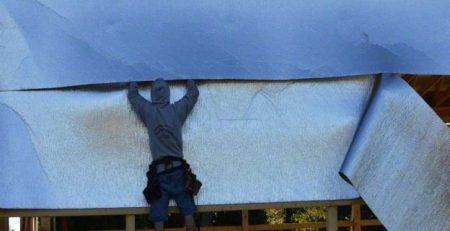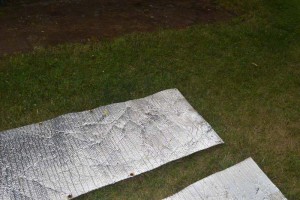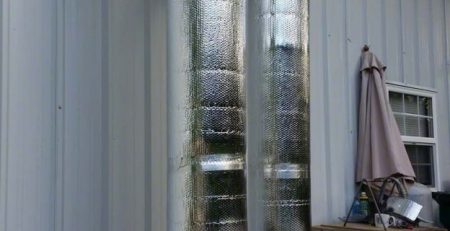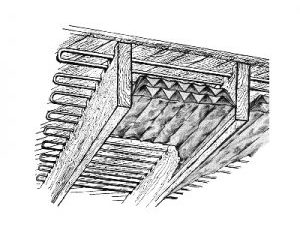Radiant Barriers: The Next Level in Protecting Storage Spaces
When we think of storage, we think of protection. A storage space should keep our goods safe until we need them. Unfortunately, many storage areas lack one critical element, protective insulation.
Storage buildings need to allow plenty of room for goods. As a result most are designed with thin roofs and walls with little or no insulation. Most storage facilities have metal roofs and walls, which can cause more temperature control problems. Metal easily conducts heat, allowing rooms to warm up faster on hot days, and chill quickly during cold spells. In addition, condensation often forms on metal surfaces when the temperature changes. This creates moisture that can drip on the goods stored within the structure.
Whether you have a storage shed on your property, or use commercial storage spaces, you can easily add reflective insulation to protect your goods from the elements and extreme temperatures. Reflective insulation creates what is called a “radiant barrier” Traditional insulation, like the familiar pink fiberglass, absorbs heat. This slows heat flow into or out of a building, but will not block the sun’s rays from entering a building.
Reflective insulation consists of a shiny aluminum surface laid over plastic or other materials. The surface reflects radiant heat away from a building. As a result, the walls and roof of a storage facility will absorb significantly less radiant heat preventing extreme temperature changes within the storage space. The polyethylene backing material consists of bubble layers that also prevent conductive and convective heat flow into or out of the structure thereby helping to maintain a consistent temperature.
Reflective insulation is a strong durable substance. It can be easily cut to fit a storage space, but will resist tearing once in space. Installation is easy, as the insulation can be attached with adhesive tape or glue, nails or even strong staples.
Once in place, reflective insulation also resists moisture accumulation, helping keep goods dry. As goods are sheltered from heat, light and water, they are less likely to age prematurely, become discolored or be damaged by freezing and thawing cycles. Among its many advantages, reflective insulation can also:
- Create a barrier to pests, rodents and vermin
- Line freezer storage spaces to keep temperatures cold and save on energy costs
- Provide an extra layer of insulation and protection in home storage areas like basements, crawlspaces, walk-in closets and attics.






Leave a Reply